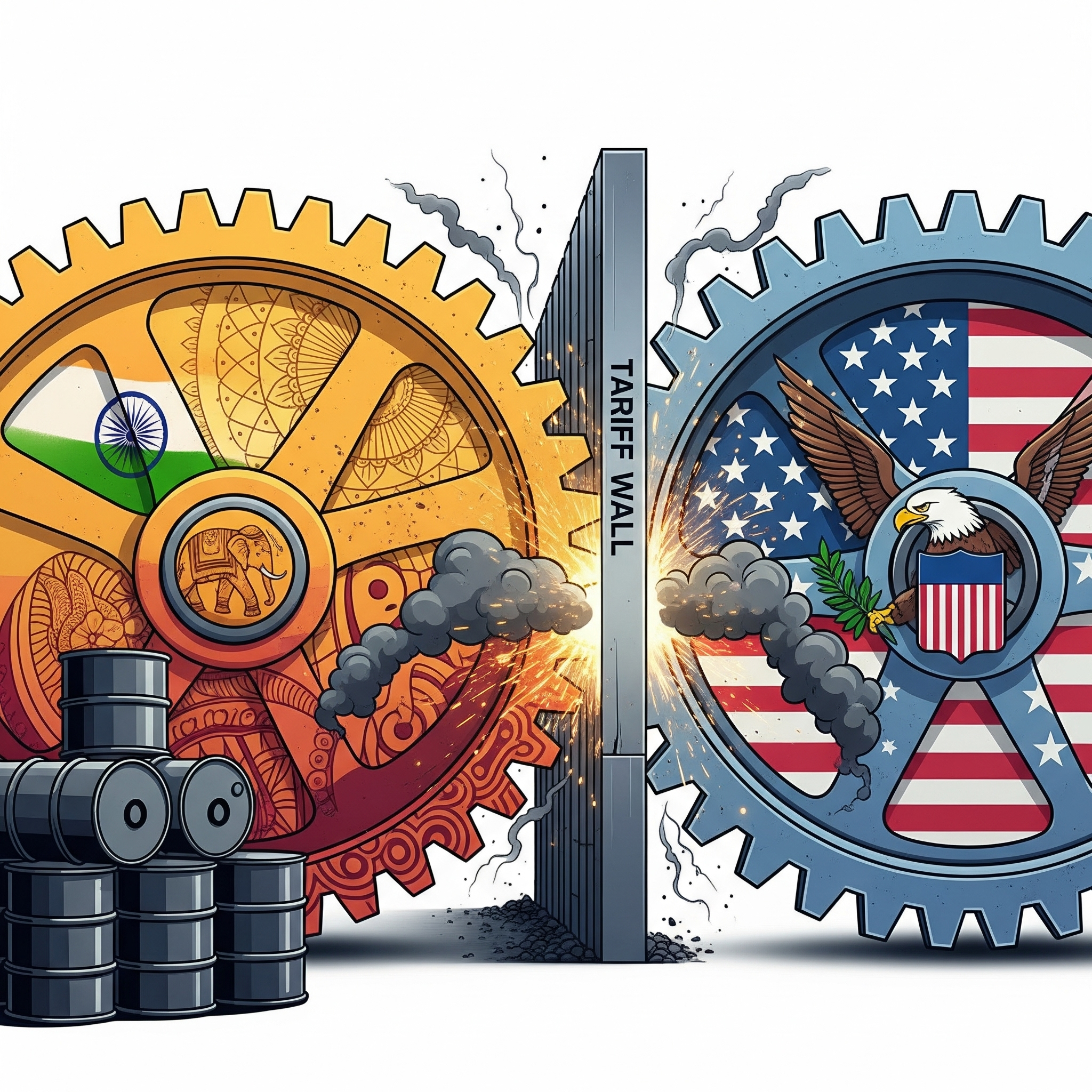India–U.S. Trade Tensions 2025
India–U.S. Trade Tensions 2025: What Trump’s 25% Tariff Threat Means for Indian Economy
🌟 Introduction
The India–U.S. trade relationship has always been a mix of cooperation and competition. In 2025, tensions have flared up again after U.S. President Donald Trump signaled a 25% tariff on Indian exports. The trigger? India’s continued purchase of Russian oil, which Washington sees as undermining its sanctions policy.
This potential tariff hike could affect $18 billion worth of goods, making it a serious challenge for Indian exporters, industries, and policymakers. In this blog, we’ll break down what this means for India, which sectors will feel the heat, and how the country might respond.

📊 India–U.S. Trade Snapshot in 2025
-
Bilateral Trade Volume: $192 billion (2024 figures)
-
India’s Exports to U.S.: Textiles, pharmaceuticals, IT services, gems & jewelry, machinery
-
U.S. Exports to India: Aircraft, machinery, agricultural products, medical devices
The U.S. is India’s largest export destination, which means any trade barrier can have a ripple effect on the economy.
🚨 Why the Tariff Threat Matters
A 25% tariff means Indian goods will become more expensive in the U.S. market, reducing competitiveness. For example:
-
A $1,000 shipment of Indian garments could cost $1,250 after tariffs, making buyers turn to cheaper sources like Vietnam or Bangladesh.
-
Pharma products may face higher entry costs, pushing U.S. buyers to European suppliers.
🏭 Key Industries at Risk
1️⃣ Textiles & Apparel
India’s garment exports to the U.S. are worth over $8 billion annually. A 25% price hike could push American retailers to shift orders elsewhere.
2️⃣ Pharmaceuticals
India is the world’s largest supplier of generic medicines to the U.S. While essential drugs may get exemptions, bulk drugs and APIs could still be affected.
3️⃣ Gems & Jewelry
Indian diamond and gold jewelry exports face stiff competition from China and Thailand — higher tariffs could mean losing market share.
4️⃣ Machinery & Engineering Goods
Industries that depend on precision exports (auto components, machine tools) could lose contracts to Mexico or Eastern Europe.
💰 Possible Impact on the Indian Economy
-
Export Revenue Loss: Could run into billions if trade volume falls.
-
Rupee Pressure: Lower dollar inflow might weaken the rupee.
-
Job Losses: Export-heavy sectors employ millions, especially in MSMEs.
-
Trade Deficit Widening: More imports than exports could hurt the balance.
🛡 Possible Indian Government Responses
📌 Diplomatic Negotiations
India could push for dialogue, stressing its strategic partnership with the U.S. while highlighting that Russian oil purchases are part of energy security needs.
📌 Diversifying Export Markets
Targeting Europe, Africa, and Southeast Asia to reduce overdependence on the U.S.
📌 Trade Incentives
Offering subsidies or tax relief to affected industries to absorb tariff shocks.
📌 WTO Dispute Settlement
India can take the matter to the World Trade Organization if the tariffs violate trade norms.
🌏 Lessons from Past Trade Tensions
In 2018–19, when the U.S. removed India from its Generalized System of Preferences (GSP) list, Indian exporters faced similar challenges but adapted by seeking alternative markets. The same strategy may be needed now, but with more aggressive marketing and quality upgrades.
💡 What Businesses Should Do Now
-
Lock in Orders Early: Secure contracts before tariffs are imposed.
-
Value Addition: Focus on high-quality, niche products that can bear higher prices.
-
Local Partnerships: Collaborate with U.S. distributors to share tariff costs.
-
Use Trade Finance Tools: Protect cash flow during market slowdowns.
📢 Expert View
Economists warn that while the U.S. is a key market, overreliance on one partner is risky. The current situation should push India to strengthen regional trade agreements like RCEP and boost exports in emerging African economies.
🔮 The Road Ahead
If negotiations succeed, tariffs might be avoided or reduced. If not, the Indian government will need to balance diplomacy with diversification. Long-term, the focus should be on innovation, manufacturing competitiveness, and global branding of Indian products.
External Link (Plain Text):
Internal Links (Plain Text):
